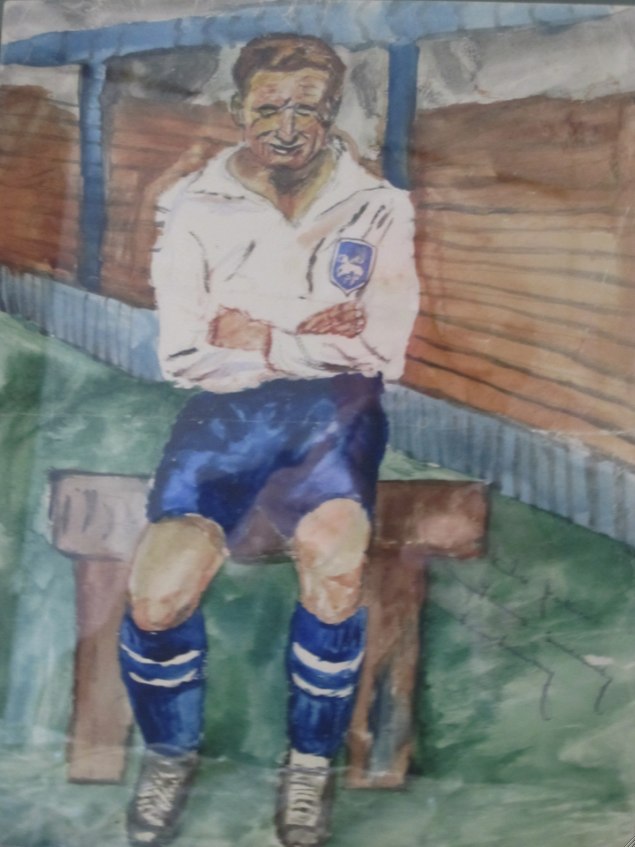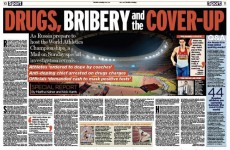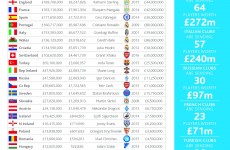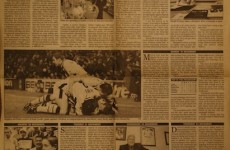*
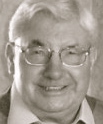 JOHN ROBERTS wrote for the Daily Express, The Guardian, the Daily Mail and The Independent, where he was the tennis correspondent for 20 years. He collaborated with Bill Shankly on the Liverpool manager’s autobiography, ghosted Kevin Keegan’s first book, and has written books on George Best, Manchester United’s Busby Babes (The Team That Wouldn’t Die) and Everton (The Official Centenary History).
JOHN ROBERTS wrote for the Daily Express, The Guardian, the Daily Mail and The Independent, where he was the tennis correspondent for 20 years. He collaborated with Bill Shankly on the Liverpool manager’s autobiography, ghosted Kevin Keegan’s first book, and has written books on George Best, Manchester United’s Busby Babes (The Team That Wouldn’t Die) and Everton (The Official Centenary History).
As Matthew Engel once wrote in the British Journalism Review: “I suspect posh-paper sports writing changed forever the day John Roberts left the Daily Express to join The Guardian in the late 1970s, was handed a piece of routine agency copy and picked up a telephone to start asking questions.”
.
.
By John Roberts
3 April 2012
Unlike Lowry’s ‘Going To the Match‘, which was also painted during the 1950s, the watercolour of Tom Finney accompanying these words never had a hope of being bought by the Professional Footballers’ Association for £1.92m. Otherwise, I would have retired long ago.
An autograph hunter like millions of other youngsters, I sent the picture to Finney c/o Preston North End asking if he would sign it. Typically – of the man and the times – the request was granted.
You need to look carefully for the written message and the autograph but it’s there, sloping down diagonally from the right-hand side of the bench. It reads: “To John, yours sincerely, Tom Finney.”
The picture hangs in my study.
Happily, journalism brought me into contact with the man himself, an exemplar of sporting brilliance and sportsmanship, who marks his 90th birthday on Thursday; as Sir Tom, of course.
A number of splendid footballers down the years have been lauded as gentlemen of the game. Few, if any, have come close to Finney in blending exquisite skills with exemplary conduct (even Sir Bobby Charlton was known to whinge on occasion).
Finney would no more have tripped an opponent, or pretended to have been tripped, than he would have left a tap without washers during his day job as a plumber.
A one-club man in the days when – aside from his commitment to the family plumbing and electrical business – football’s maximum wage was hardly an incentive for players to seek transfers without good reason – Finney’s lack of medals did not dim his reputation.He was twice voted Footballer of the Year and won 76 England caps in three different positions – right wing (40), left wing (33) and centre forward (3) – and scored 30 goals.
Selectors, who picked the national team at the time, worried about playing Finney in the same forward line as Stanley Matthews, the right-wing wizard. When they gambled by playing the pair in Portugal in 1947, England won 10-0. Finney and Matthews scored a goal each and made four for both Tommy Lawton and Stan Mortensen.
You do not have to take my word for Finney’s ability when I can repeat the views of Bill Shankly, who regularly bashed my ears on the subject during the course of collaborating with Shanks’ on his autobiography.
In his time as a Preston wing half, Shankly saw Finney play for Preston schoolboys and played behind the youngster before they were called up for service during the second World War, Shankly with the RAF, Finney with the Army. After the war they played for two seasons together at Preston.
Shankly’s opinion: “If I were pressed into it, I would say Tommy was the best player ever born. But it is perhaps fairer to categorise, and say he was the best forward. Stan Matthews was the great outside-right, but Tommy scored more goals and was better in the air – there were ironical cheers if Stan headed a ball. Tommy was also a strong tackler.
“He preferred to play on the right, but could play anywhere. He was naturally left-footed and did all his manipulating with his left, but he was useful with both feet. He positioned himself so well, you could find him with your eyes shut, and I am certain that no player ever made more direct passes to a man to put the ball in the net. All calculated cut-backs from the byline.”
In short, many happy returns.
.


